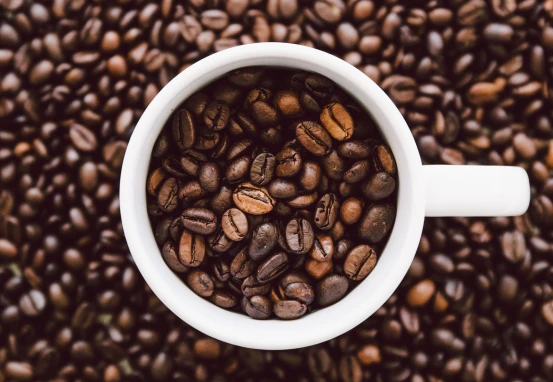Health
DOPAMINE FASTING AND WELLNESS: A SOLUTION TO SOCIAL MEDIA AND OTHER MODERN DAY ADDICTIONS

Always seek the advice of your own Medical Provider and/or Mental Health Provider regarding any questions or concerns you have about your specific health or before implementing any recommendations or suggestions, as enrollment in our online courses does not substitute a relationship with an actual Medical/Mental Health Provider.
Do not stop taking any medications without speaking to your physician, nurse practitioner, physician assistant, mental health provider or other healthcare professional. If you have or suspect that you have a medical or mental health issue, contact your own health care provider promptly. If you know or suspect that you may be pregnant, have an eating disorder, or have any other physical, psychological, emotional or medical or mental health condition, it is imperative that you seek the advice of your doctor or other health care provider prior to using Our Content.
We are not providing health care, mental health care, medical or nutrition therapy services or attempting to diagnose, treat, prevent or cure in any manner whatsoever any physical ailment, or any mental or emotional issue, disease or condition. We are not giving medical, psychological, or religious advice whatsoever.
DOPAMINE FASTING AND WELLNESS: BEHAVIOR CHANGE
Dopamine fasting has become a popular practice for people hoping to break or change certain unfavorable or overly stimulating behaviors. This form of fasting is considered a remedy to overstimulation or addiction associated with focusing on too many things. Dopamine is a major neurotransmitter that influences humans into engaging in different behaviors or activities such as feeding and smoking, among others (Way, 2019). The amount of dopamine in the neuro system mainly depends on the quantity or frequency one engages in dopamine generating activities. Dopamine fasting is therefore aimed at helping a person to abandon behaviors that generate high quantities of dopamine including browsing online, taking alcohol, and watching television, among others (Ginovart & Kapur, 2012). Although the long-term effects of brain over-stimulated are still unclear, some studies have revealed that it reduces one’s capacity to enjoy routine tasks, maintain attention, and balance emotions.

USING DOPAMINE FASTING TO CHANGE BAD HABITS
The first step for effective dopamine fasting is identifying the harmful habits one hopes to avoid. The decision is based on whether a behavior is problematic or overly pleasurable, and hence the need to change it (Roseberry, 2015). For instance, one may decide to take a daily or weekly break from using any social media or other online sites for a significant period of time. The time initially used for potentially harmful activities is then redirected to wellness-promoting activities such as cooking, reading books, creating art, exercising, socializing, and serving others. Dopamine fasting is seen as a healthy replacement for stimulant medications such as Ritalin and Adderall, initially given to individuals with attention disorders (Roseberry, 2015). The problem with stimulant drugs is that patients may develop tolerance after a prolonged period of use, hence reducing its effectiveness.

Most of the human behaviors are based on repetitive or routine activities. For example, one may develop a behavior of picking a chocolate bar anytime he or she goes shopping in a supermarket. All behaviors share characteristics in that they usually performed unconsciously or with limited or crowded reasoning (Gardner & Rebar, 2019).
Therefore, habits are systems, which allow people to effectively assign their limited abilities and time. Although the experience after consumption of a stimulant substance may be unpleasant at first, the rewards could lead to repetitive use. The repetitive use leads to the growth of a strong favorable physical reinforcement (Gardner & Rebar, 2019). It is usually very difficult to change habits using conventional means such as persuasive information because a person hooked to a particular habit is often unwilling to accept new information.
Furthermore, if information encourages alternative behavior, a person may fail to acknowledge it as useful for his or her own circumstance. Making a habit difficult or impossible is one of the most effective ways of discouraging it (Gardner & Rebar, 2019). For an instant, banning the sale of certain types of drugs or replacing an initial junk menu with vegetables and other healthy foods. However, it is clear that such methods are ineffective or inapplicable in different scenarios since they may conflict with a person’s right to choose.
An alternative strategy would involve altering the behavior of a person such that the stimulus (dopamine) is not overly released (Gardner & Rebar, 2019). For instance, individuals attempting to overcome a bad habit such as addiction must avoid the situation that encourages them to engage in the behavior such as going to the gym instead of going to the bar.
Impact of Dopamine Fasting on Wellness
According to Roseberry (2015), fasting leads to multiple physiological changes, which are likely to affect neurons in the brain that in turn causes changes in the buildup and release of somatodendritic dopamine.

Usually, food restrictions and fasting tend to generate significant levels of stress, which has a deep effect on the functions of dopamine neurons and dopamine-influenced behaviors (Roseberry, 2015). Therefore, there is a likelihood that changes in stress-reactive pathways or stress hormones could influence the neurons to facilitate these changes.
However, additional research is needed to assess the likely contribution of the many elements of stress pathways, which could cause these effects (Carr, 2007).
Dopamine fasting also influences the operations of many other neurotransmitters, hormones, and neuropeptides, which have been found to contribute to neuron activities. For instance, excessive feeding and limited exercise increase baseline dopamine based on behavior reinforcement or reward manner (Carr 2007).
In one of the studies, several college students who had a habit of using social media at least two hours every day were randomly selected to participate in a dopamine fast for seven days (Roseberry, 2015). After a week the students registered increased wellness from the behavior change characterized by fewer impulse purchases, healthier eating, and increased efficiency in time management. The participants also reported a significant decrease in stress levels and were less depressed.
Other studies have shown that stimulus regulation or dopamine fasting, when applied on the basis of behavior change can enable individuals to manage addictive behaviors by restricting or eliminating the urge to use.
Based on these findings, the researchers concluded that dopamine fasting led to significant time saved, which was initially wasted on social media. That time was redirected to more beneficial activities such as physical exercise, which contributed to increased wellness. Evidently, the main goal of dopamine fasting is not to eliminate enjoyment or fun from life but to reduce activities or behaviors that could lead to a less fulfilling or unhealthy life.


“Too much of anything is harmful. Even drinking too much water too fast can be deadly!”
Ade Anan
Conclusion
In conclusion, whether the increase in dopamine is triggered by external factors such as drug abuse or by internal factors such as engaging in stimulating behavior, the effects are the same. Dopamine fasting is not geared towards attaining low or no dopamine levels. Instead, breaking away from habits that stimulate the release of a high amount of dopamine gives the brain sufficient time to restore its efficiency.
Overall, dopamine fasting is a way of accustoming the brain and body to have more flexibility or balance by engaging in certain behaviors only when necessary while avoiding procrastinating beneficial behaviors. The fasting works by altering the routine operation of the neuron system that controls various reward-based behaviors. Behavior control reduces the baseline amount of dopamine in different target areas and increases the release of dopamine in reaction to behavior reinforcements such as drugs and food. The release of dopamine in different parts of the brain and body serves as an autoinhibitory trigger to limit the activities of other behavior-based neurons.
Visit: https://becomeanoutlier.com/
-

 Business4 weeks ago
Business4 weeks agoNayef Doleh Examines International Humanitarian Fundraising Strategies
-

 Business4 weeks ago
Business4 weeks agoHow to fill MSME Form 1? Step-by-Step Guide
-

 Festivals & Events4 weeks ago
Festivals & Events4 weeks agoInteresting Facts about St. Patrick’s Day
-
Business4 weeks ago
From Marine to Chief: The Leadership Journey of Sean Mannix
-

 Gadget3 weeks ago
Gadget3 weeks agoAfter Grand Success on BLDC Ceiling Fan, Eff4 Is Launching Smart Bulb
-

 Festivals & Events3 weeks ago
Festivals & Events3 weeks agoGoogle Celebrates Cherry Blossom Season with Animated Doodle
-

 Sports4 weeks ago
Sports4 weeks agoKabaddi World Cup 2025: Full Schedule, Fixtures, Match Date, Time and More
-

 Book4 weeks ago
Book4 weeks agoNavigating Life’s Rope Bridges: Dr. Lynda’s Transformative Guide to Change























